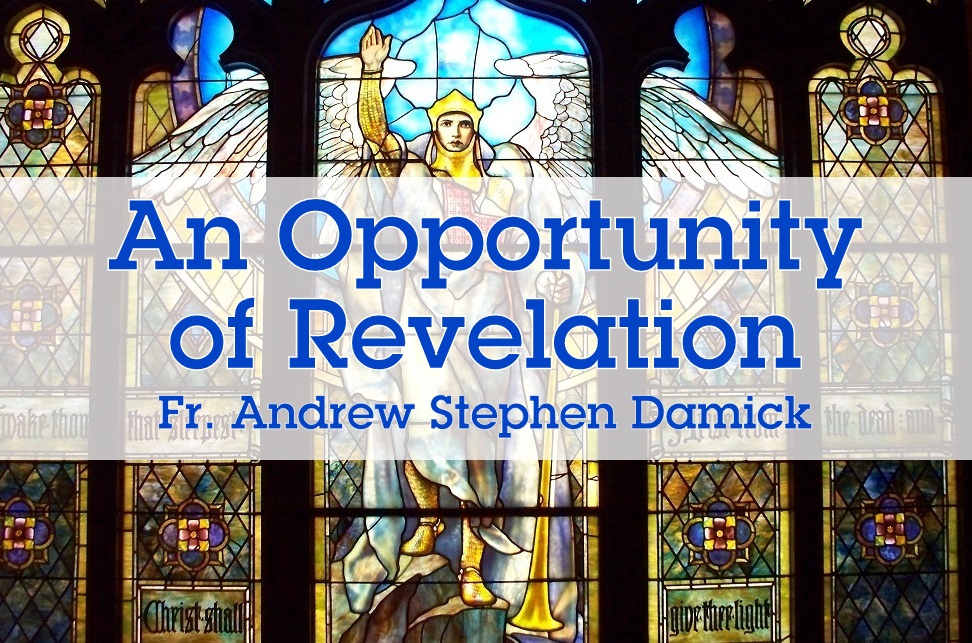
One of the issues that occupies my thoughts frequently is how we know what we know, especially how we apprehend the revelation of God. I do not think it is something that can be laid out in mechanically reproducible ways, but I do believe that there are many ways of speaking of it that are all true in different ways. And I find that I often find some of those ways in the words of Metropolitan Anthony (Bloom). Here’s one:
I believe that in our day we still live under the illusion that everything that is not rational is dubious. And yet psychology has shown us that there is a whole irrational world that is decisive in a man’s inner life. When I say ‘irrational’ I do not mean ‘unreasonable’. There is, for instance, the entire range of human love, whether it be friendship, family love, the love that singles out from the crowd the one who is unique for us, who re-orientates the whole world for us. As one of the old Greek writers said: ‘Before a man meets and loves the girl who will be his betrothed, he is surrounded by men and women; from the moment he discovers the beloved — it is she and the others are people.’ This experience, so rich, so complex and so universal, belongs to the order of the irrational in the sense that it cannot be manufactured by reason: to love someone is not a balance sheet of reasons for and against; it is a direct experience, a fact which imposes itself but which goes too deep for us to be able to speak of any reasoned argument. It is the same with the experience of beauty, whether it be in music or the plastic arts, whether it depend on the ear or the eye; it is not just the sum total of good reasons for admiring a work of art. If we wish to share with someone our experience of the beauty of a piece of music, of sculpture, of architecture or of painting we begin by inviting them with the words Christ spoke to his first disciples: ‘Come and see!’ We certainly would not begin by saying: ‘First I am going to explain to you all the beauty in this work of art, and when you understand it properly, then you can be allowed to experience it.’
In these two primordial experiences of love and beauty, we find ourselves confronted with someone or something which may have gone unperceived for years or never before noticed. For some reason, suddenly, unaccountably, we see what we have not seen before. In a group of people, a girl and a young man are part of the crowd. And then one day they see each other. Something happens, like a ray of sunshine falling on stained glass. The glass, without sunlight, looks like a criss-cross of darker lines on an uneven grey background. Suddenly there is illumination, beauty, theme, sense. Now one sees the stained glass. The ray of sunlight is ephemeral, it will be extinguished at the end of the day or in a moment, but whoever saw the window now knows that it is not a grey patch but a stained glass window which has become invisible. Certainty prevails over the evidence: this is what we call faith. I know that all the beauty I have perceived is there although it seems to be quenched.
Now, there are two ways of regarding this window, given the fact that I have once seen it. The window, like all revelations, is a two-fold revelation: it is revealed by the ray of sunshine which lit it up and it reveals the ray of sunshine which, without it, would have remained invisible. Two people meet and see each other illuminated, so to speak, from within, revealed to each other by the light of the grace of God, in all the splendour of their reality, such as God sees them. These two people can, when the splendour dies, preserve the certainty of it and remember that the vision was given them just because God irradiated the depths and showed them. But what happens more often is that, having seen someone in the splendour of this glory, we forget the vision which has been given to us by a light from beyond and, foolishly, we imagine that all the beauty belonged to the person himself. What was stained glass becomes an idol, what was revelation becomes an opaque wall beyond which we cannot see. You know very well — all literature speaks of it — how a fleeting vision can be transformed afterwards into an idolatry which is labelled passionate love and is the subject of the romances of every country.
Until we learn that we must preserve the vision we have had in the richness of a two-fold co-relative relation; as long as we continue to transform into idols all that God reveals to us of human or artistic beauty, we shall be transforming what should be an opportunity of revelation into one of not seeing any more, because we have changed the girl we love into an idol; or having seen a tree against the sky in a loveliness that had never struck us before, it is the tree we worship instead of realising the whole complex of things and events which has revealed something we had not grasped before. While we do this we shall never know, even on the simplest, most natural, most human plane, a new dimension and we shall go on living in two dimensions, time and space. We must accept to the utmost the experience of loving, cherish and discover the beauty of things and of people. Then, when we have discovered on this plane the dimension which goes beyond reason, which can be examined by the reason but not created by it, we shall be much nearer to making discoveries bearing on God.
– Metropolitan Anthony (Bloom) of Sourozh, Meditations on a Theme, pp. 31-34
One way I understand what Metropolitan Anthony is saying here is that we have to continue in freedom, both for ourselves and for whatever we are apprehending by our experiences. Once we remove that freedom by objectifying the beautiful, we are turning our beautiful experiences into idolatry.
This objectification of the beautiful often happens in human relationships. Initially illumined by the revelation of the other person, we begin to bring expectations to the relationship, standards by which we measure another person in objectification rather than freedom given in revelation. That is when the relationship begins to be corrupted. The same is true of almost any other beauty we see, whether in people or in other created things.
Yet if we remain open and continue to give that freedom, then we will be able to see what there is to see. Then we will have, as he says, “an opportunity of revelation.” Looking beyond the single experience of beauty to its source, then we will see Beauty Himself revealed. And then all things will become sacramental, revealed for what they truly can be—sanctifying vessels of divinity.


